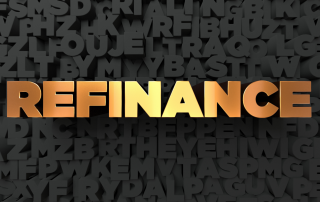If you’re considering a home refinance, you might find yourself drowning in questions:
- What are the risks of loan refinancing?
- How does my credit score affect the refinancing process?
- What does it even mean to refinance a home?
Simply put, refinancing means replacing your current mortgage with a new loan. However, the process of swapping your old mortgage for a new one isn’t entirely straightforward. In order to eliminate the confusion and anxiety around this revamping of your home loan(s), we’re spelling out exactly what it means to refinance your home.
How Does Refinancing Work?
There are many reasons homeowners take the refinancing route. Perhaps you’re interested in:
- Reducing your monthly mortgage payment
- Shortening the terms of your loan
- Moving out of an adjustable-rate mortgage into a fixed-rate mortgage
- Consolidating debts
Whatever your reason may be, the first step when considering refinancing is to determine how your loan will be repaid. Start with some research regarding different types of loans and acknowledge your reasons for refinancing. Focus on how the process could affect—both positively and negatively—your ultimate financial well-being.
If you’re looking for additional clarity, it helps to reach out to an experienced mortgage broker for a consultation. They’ll help you compare what you’ve already paid on your old loan to how much interest you’ll be paying in total with the new loan. Plus, mortgage brokers have access to a wide variety of lenders and that can mean better rates.
After weighing out the pros and cons of refinancing, begin to gather the necessary materials for the applications. Below are some common documents required, but are not limited to:
- Driver’s license
- Tax returns
- W-2 forms
- Bank statements
Your mortgage professional will work with you and let you know exactly what documents
Once it’s time to apply, be sure to shop around for options. If you want to save time and gain access to additional loan options, mortgage brokers can generally find your products you won’t find at your bank.
Types of Refinancing
With so much interest in refinancing today, you might be wondering which type of loan is right for you based on your current circumstances. To break it down simply, there are three common types of refinance mortgage rates:
- Rate and term refinancing is the most common option, which means trading in an old mortgage for a brand new loan, complete with new terms and rates, without raising the loan amount. This model of refinancing is best for homeowners who are looking to reduce their rates or switch from an adjustable-rate mortgage to a fixed-rate mortgage (or vice versa). For example, you might refinance from a 30-year fixed $200,000 loan at 6.30% to a 15-year fixed $200,000 loan at 4.25%, allowing you to pay off the mortgage faster with less interest without changing the loan amount.
- Cash-out refinancing is best for those who need cash now. This particular option swaps out the existing loan for a larger mortgage (by 5% or more) to receive the difference as cash. With a cash-out mortgage, the homeowner taps into the equity of their home but is left with a larger loan amount. For example, you could exchange a $300,000 loan, 30-year fixed at 6.25% for a $400,000 loan, 30-year fixed at 4%, and pocket $100,000 cash.
- Cash-in refinancing is the opposite of cash-out refinancing, in which homeowners pay down their mortgage while refinancing to increase equity and keep the loan amount below a certain threshold for lower rates, terms, or both. Those who don’t typically qualify to refinance choose this option when the value of their homes has decreased.
What are the Risks?
The core advantages of refinancing a mortgage are the lower monthly payments and thousands of potential dollars saved, but with any benefits come potential pitfalls. Be wary of prepayment penalty clauses lurking in the loan contract—some untrustworthy brokers impose fees as high as 85% or six months of interest on the original loan balance if the property is sold before a certain date.
Banks may also tack on extra charges such as closing costs, application fees, and loan processing fees. Oftentimes, homeowners can negotiate these closing costs down. Be aware of the interest rates that come with fees like closing costs and processing charges. At the same time, be cautious of banks that promise no closing costs, as they could skyrocket the plan’s interest rate.
Refinancing often means extending the duration of time it’ll take to pay off your loan. For example, if you’re five years into a 30-year loan and you refinance to a new 30-year loan, you’ve stretched out your payment period by five years. Be sure the savings are worth the costs of refinancing.
When Should I Refinance My Home?
Most importantly, consider whether or not refinancing makes sense for you. To get a general sense of when you’ll break-even(when the mortgage refinances will pay for itself), divide total closing costs by monthly savings.
closing costs ÷ monthly savings = months until breakeven
However, bear in mind that the decision to refinance should be based on more than just breaking even.
If you can decrease your current interest rate by 0.75% to 1% or more, refinancing definitely makes sense for you. In order to be able to refinance, you should keep your original mortgage for at least a year. Though not required, it can be beneficial to refinance with your original lender, as oftentimes you can get a better rate.
If you’re interested in learning more about refinancing your mortgage, click here to contact Co/LAB Lending. We’ll help you find an option that’s tailored to your individual needs.
